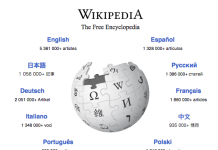A synthesis is a piece of writing that combines information from two or more sources. If a writer is explaining a concept or event, research from different sources can be synthesized to offer a well-rounded explanation of it. If a writer is arguing a point, her point can be emphasized by synthesizing several pieces of research that back her thesis.
The idea of a “synthesis” in writing can seem abstract, so it’s important to conceptualize it in a way that’s easy to grasp. Michigan State University provides examples of synthesis in everyday life: “It follows that your ability to write syntheses depends on your ability to infer relationships among sources—essays, articles, fiction, and also non-written sources, such as lectures, interviews, observations. This process is nothing new for you, since you infer relationships all the time—say, between something you’ve read in the newspaper and something you’ve seen for yourself … In fact, if you’ve written research papers, you’ve already written syntheses. In an academic synthesis, you make explicit the relationships that you have inferred among separate sources.”
This article itself is an example of a synthesis. Before writing, I conducted research to find some of the best information online about synthesis writing. I then drew information from each of these sources and combined it with my own knowledge of synthesis writing. The result is a new work that combines information from many sources to explain synthesis in my own way.
Why is it important to synthesize? The most successful research paper is one that uses many sources to support an original thesis. This requires more than simply summarizing passages of source material; it means drawing connections between the sources, and using these connections to relate the different passages in a way that sheds new light on, and transforms, the material. Recognizing these “connections” is imperative.
Strategies for Synthesis
Taking a more thoughtful approach to reading during your research phase is usually the first step toward creating a successful synthesis, as MIT professor Ed Boyden explains in a Technology Review blog post titled “How to Think”:
“Synthesize new ideas constantly. Never read passively. Annotate, model, think, and synthesize while you read, even when you’re reading what you conceive to be introductory stuff. That way, you will always aim towards understanding things at a resolution fine enough for you to be creative.”
By reading actively, students will be better able to recognize the crucial connections between ideas that form the basis for synthesizing.
Advanced Synthesis
Students must learn to approach their research with synthesis in mind. One of the most straightforward and comprehensive guides to writing syntheses comes from Michigan State University. Its “Introduction to Syntheses” article covers the purpose of syntheses, types of syntheses, and techniques for writing synthesis essays. This article is a must-read for older students, particularly the section “How to Write Synthesis Essays.”
According to the College Board, one exercise used in AP English courses to emphasize synthesis is the researched argument paper. “Researched argument papers remind students that they must sort through disparate interpretations to analyze, reflect upon, and write about a topic. When students are asked to bring the experience and opinions of others into their essays in this way, they enter into conversations with other writers and thinkers.”
Synthesis for Young Students
Into the Book, a site that aims to help teachers educate students on reading comprehension strategies, has aggregated links to help students learn synthesis skills. The “Teacher Background” links provide teachers with ways of thinking about synthesis that could aid them in their classroom instruction. The “Key Concept: Synthesis” from a companion website has an interesting graphic organizer that students can fill out while reading, to make identifying connections in the text a less abstract activity.
Need Examples?
Explore synthesis in action in our 2Day in History and 2Day’s Biography on articles – all of which are built through synthesis. When writing about a topic, our writers conduct extensive research to find background and historical information, different perspectives, and related topics, and then they synthesize information from these sources to provide a comprehensive perspective about the topic.
Different types of stories require different types of synthesis. Our “2Day in History” articles usually require synthesis of historical resources to explain a chronology of events. In other articles, we report on current events, but contextualize them by synthesizing background information.
In other articles, we present a handful of diverse opinions about a topic to broaden our readers’ understanding of that topic. These opinions, though differing in their views, are bound together through their connection to the original topic, and can thus be synthesized.
Because each of our stories includes in-text links to the original source material, a student can easily see where and how we integrated our research.









